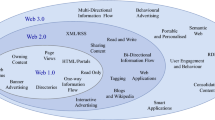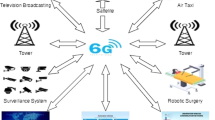Abstract
The recent advancements in the Internet of Things (IoT) have engendered an increased penetration of cyber-physical systems such as internet-enabled devices and sensors for surveillance and management applications. This has posed an increased risk of attacks in these devices and networks by malevolent agents. Social Internet of Things (SIoT) is an emerging paradigm that incorporates the concept of Social Networking into the Internet of Things that paved the way to an area called Social Internet of Vehicles (SIoV) that is capable of autonomously establishing social relationships among other network participants for the overall system improvement. Due to the ad-hoc nature of the environment, it is hard to ensure the trustworthiness of the nodes to rely on the opinions, messages, and credibility of the message senders. We propose a Blockchain based reputation management system using Bayesian Inference approach for estimating the posterior probability of trustworthiness of each decision-making node in the network based on the decisions on incidents concerning the hypothesis. A dynamic weight learning mechanism of nodes and events is proposed for an efficient decision system. The proposed decision fusion algorithm is a novel voting mechanism based on the reputation of the node and the importance of the event. This approach uses Blockchain as a solution for identity management for node authorization and access control, and also for distributed storage of node reputation scores. The decision strategy of the proposed work outperforms other decision approaches such as simple majority voting, weighted voting, fuzzy rule-based inference, etc. The proposed approach out performs the state of the art trust management algorithms as discussed in results section, on the degree of punishment the propose algorithm offers to malicious activity.
















Similar content being viewed by others
References
Yang Q et al (2017) A rough set approach for determining weights of decision makers in group decision making. PloS One 12.2:e0172679
Nitti M, Girau R, Atzori L (2013) Trustworthiness management in the social internet of things. IEEE Trans Knowl Data Eng 26(5):1253–1266
Cunha F et al (2016) Data communication in VANETs: Protocols, applications and challenges. Ad Hoc Netw 44:90–103
Herrtwich RG (2005) Communicating vehicles–communicating roadways: New approaches to driver information and road safety. In Proc 11th Annu ACM Int Conf Mobile Comput Netw–Invited Talk
Data World. City of Bloomington, IN, Traffic Data. Data set accessed 2021-10-10 at https://data.bloomington.in.gov/dataset/traffic-data. Last updated 2021-01-07
Resendes R (2008) The new grand challenge–Deploying vehicle communications. In Proc ACM Int Workshop Veh Inter-Netw–Keynote Address
Nima A et al (2021) Decentralized ID and Access Management (DIAM) for IoT Networks, The Hyperledger Telecom Special Interest Group. https://www.hyperledger.org/wp-content/uploads/2021/02/HL_LFEdge_WhitePaper_021121_3.pdf
Esposito C et al (2020) Robust decentralised trust management for the internet of things by using game theory. Inf Process Manag 57(6):102308
Ouaguid A, Abghour N, Ouzzif M (2018) A novel security framework for managing android permissions using blockchain technology. International Journal of Cloud Applications and Computing (IJCAC) 8(1):55–79
Esposito C, Massimo F, Gupta BB (2021) Blockchain-based authentication and authorization for smart city applications. Inf Process Manag 58(2):102468
Mohan AP, Gladston A (2020) Merkle tree and blockchain-based cloud data auditing. International Journal of Cloud Applications and Computing (IJCAC) 10(3):54–66
Li D et al (2019) A novel CNN based security guaranteed image watermarking generation scenario for smart city applications. Inf Sci 479:432–447
Al-Qerem A et al (2020) IoT transaction processing through cooperative concurrency control on fog–cloud computing environment. Soft Comput 24(8):5695–5711
Tewari A, Gupta BB (2017) Cryptanalysis of a novel ultra-lightweight mutual authentication protocol for IoT devices using RFID tags. J Supercomput 73(3):1085–1102
Yang Y, Bagrodia R (2009) Evaluation of VANET-based advanced intelligent transportation systems. In Proc 6th ACM Int Workshop Veh Inter-Netw pp. 3–12
Marmol FG, Pérez GM (2012) TRIP, a trust and reputation infrastructurebased proposal for vehicular ad hoc networks. J Netw Comput Appl 35(3):934–941
Shi N et al (2020) A blockchain-empowered AAA scheme in the large-scale HetNet. Digit Commun Netw
Tan L et al (2021) A blockchain-empowered crowdsourcing system for 5G-enabled smart cities. Comput Stand Interfaces 76:103517
Feng C et al (2021) Efficient and secure data sharing for 5G flying drones: a blockchain-enabled approach. IEEE Netw 35(1):130–137
Yu K-P et al (2021) Blockchain-enhanced data sharing with traceable and direct revocation in IIoT. IEEE Trans Ind Inf
Mahmoud M, Shen X (2011) An integrated stimulation and punishment mechanism for thwarting packet dropping attack in multihop wireless networks. IEEE Trans Veh Technol 60(8):3947–3962
Li Q, Malip A, Martin KM, Ng S, Zhang J (2012) A reputation-based announcement scheme for VANETs. IEEE Trans Veh Technol 61(9):4095–4108
Lai C, Zhang K, Cheng N, Li H, Shen X (2017) SIRC: A secure incentive scheme for reliable cooperative downloading in highway VANETs. IEEE Trans Intell Transp Syst 18(6):1559–1574
Raya M, Papadimitratos P, Gligor VD, Hubaux JP (2008) On datacentric trust establishment in ephemeral ad hoc networks, in Proc. Phoenix, USA, Apr, IEEE INFOCOM, pp 1238–1246
Li W, Song H (2013) Information-oriented trustworthiness evaluation in vehicular ad-hoc networks. In Proc International Conference on Network and System Security, Madrid pp. 94-108
Li Z, Chigan CT (2014) On joint privacy and reputation assurance for vehicular ad hoc networks. IEEE Trans Mob Comput 13(10):268–273
Huang X, Yu R, Kang J, Zhang Y (2017) Distributed reputation management for secure and efficient vehicular edge computing and networks. IEEE Access 5:25408–25420
Huang X, Yu R, Kang J, Zhang Y (2016) A distributed reputation scheme for situation awareness in vehicular ad hoc networks (VANETs), in Proc. San Diego, Mar, IEEE CogSIMA, pp 63–67
Christidis K, Devetsikiotis M (2016) Blockchains and smart contracts for the Internet of Things. IEEE Access 4:2292–2303
Lei A, Cruickshank H, Cao Y, Asuquo P, Ogah CPA, Sun Z (2017) Blockchain-based dynamic key management for heterogeneous intelligent transportation systems. IEEE Internet Things J 4(6):1832–1843
Cai C, Yuan X, Wang C (2017) Towards trustworthy and private keyword search in encrypted decentralized storage. In Proc IEEE 2017 International Conference on Communications (ICC), Paris pp. 1-7
Yang Z, Yang K, Lei L, Zheng K, Leung VC (2018) Blockchain-based decentralized trust management in vehicular networks. IEEE Internet Things J
Lu Z, Liu W, Wang Q, Qu G, Liu Z (2018) A privacy-preserving trust model based on blockchain for vanets. IEEE Access 6:45655–45664
Zheng Z et al (2017) An overview of blockchain technology: Architecture, consensus, and future trends. 2017 IEEE international congress on big data (BigData congress). IEEE
Kang J et al (2018) Blockchain for secure and efficient data sharing in vehicular edge computing and networks. IEEE Internet of Things J 6(3):4660–4670
Kchaou A, Abassi R, Guemara S (2018) Toward a distributed trust management scheme for vanet. In Proc 13th Int Conf Availability Rel Secur pp. 53:1–53:6
Lu Z, Liu W, Wang Q, Qu G, Liu Z (2018) A privacy-preserving trust model based on blockchain for vanets. IEEE Access 6:45655–45664
Kang J et al (2019) Towards Secure Blockchain-enabled Internet of Vehicles: Optimizing Consensus Management Using Reputation and Contract Theory. IEEE Trans Veh Technol
Nakamoto S (2008) Bitcoin: A peer-to-peer electronic cash system
Swan M (2015) Blockchain: Blueprint for a new economy. O’Reilly Media, Inc.
Androulaki E, Barger A, Bortnikov V, Cachin C, Christidis K, De Caro A, Enyeart D et al (2018) Hyperledger fabric: a distributed operating system for permissioned blockchains. In Proceedings of the Thirteenth EuroSys Conference, p. 30. ACM
Kenney JB (2011) Dedicated short-range communications (DSRC) standards in the United States. Proceedings of the IEEE 99(7):1162–1182
Wood G (2014) Ethereum: A secure decentralised generalised transaction ledger. Ethereum project yellow paper 151:1–32
Dhillon V, Metcalf D, Hooper M (2017) The hyperledger project. Blockchain enabled applications. Apress, Berkeley, CA, pp 139–149
Olson K, Bowman M, Mitchell J, Amundson S, Middleton D, Montgomery C (2018) Sawtooth: An Introduction. The Linux Foundation, Jan
Sivia D, Skilling J (2006) Data Analysis: A Bayesian Tutorial. Oxford University Press, 2nd edition
Bouzid Z, Potop-Butucaru MG, Tixeuil S (2009) Optimal Byzantine resilient convergence in asynchronous robots networks. Symposium on Self-Stabilizing Systems. Springer, Berlin, Heidelberg
Feng R et al (2015) A credible Bayesian-based trust management scheme for wireless sensor networks. Int J Distrib Sens Netw 11(11):678926
Acknowledgements
This work is supported by the ‘Back to Lab Programme’ research fellowship (Ref:Order No.1281/2016/KSCSTE) from Women Scientists Division(WSD), Kerala State Council for Science, Technology and Environment (KSCSTE).
Author information
Authors and Affiliations
Corresponding author
Rights and permissions
About this article
Cite this article
H.S, J., S, A. Reputation management in vehicular network using blockchain. Peer-to-Peer Netw. Appl. 15, 901–920 (2022). https://doi.org/10.1007/s12083-021-01249-5
Received:
Accepted:
Published:
Issue Date:
DOI: https://doi.org/10.1007/s12083-021-01249-5




